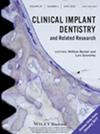Accuracy of a Cascade Network for Semi-Supervised Maxillary Sinus Detection and Sinus Cyst Classification
Abstract
Objective
Maxillary sinus mucosal cysts represent prevalent oral and maxillofacial diseases, and their precise diagnosis is essential for surgical planning in maxillary sinus floor elevation. This study aimed to develop a deep learning-based pipeline for the classification of maxillary sinus lesions in cone beam computed tomography (CBCT) images to provide auxiliary support for clinical diagnosis.
Methods
This study utilized 45 136 maxillary sinus images from CBCT scans of 541 patients. A cascade network was designed, comprising a semi-supervised maxillary sinus area object detection module and a maxillary sinus lesions classification module. The object detection module employed a semi-supervised pseudo-labelling training strategy to expand the maxillary sinus annotation dataset. In the classification module, the performance of Convolutional Neural Network and Transformer architectures was compared for maxillary sinus mucosal lesion classification. The object detection and classification modules were evaluated using metrics including Accuracy, Precision, Recall, F1 score, and Average Precision, with the object detection module additionally assessed using Precision-Recall Curve.
Results
The fully supervised pseudo-label generation model achieved an average accuracy of 0.9433, while the semi-supervised maxillary sinus detection model attained 0.9403. ResNet-50 outperformed in classification, with accuracies of 0.9836 (sagittal) and 0.9797 (coronal). Grad-CAM visualization confirmed accurate focus on clinically relevant lesion features.
Conclusion
The proposed pipeline achieves high-precision detection and classification of maxillary sinus mucosal lesions, reducing manual annotation while maintaining accuracy.

 求助内容:
求助内容: 应助结果提醒方式:
应助结果提醒方式:


